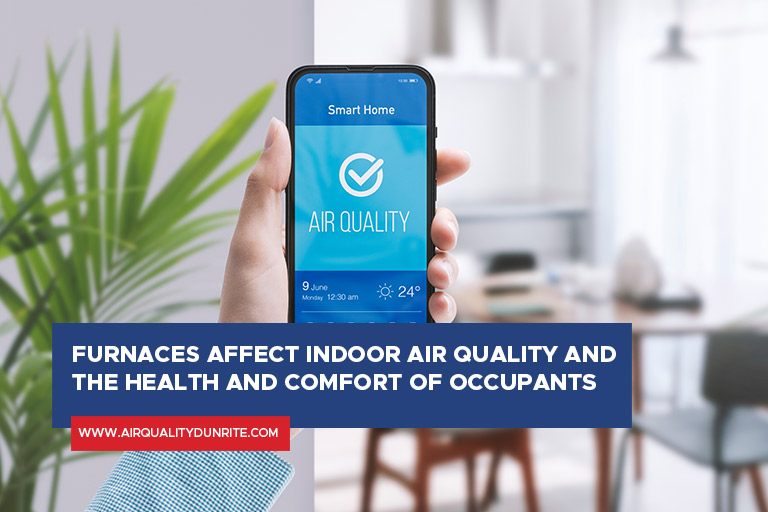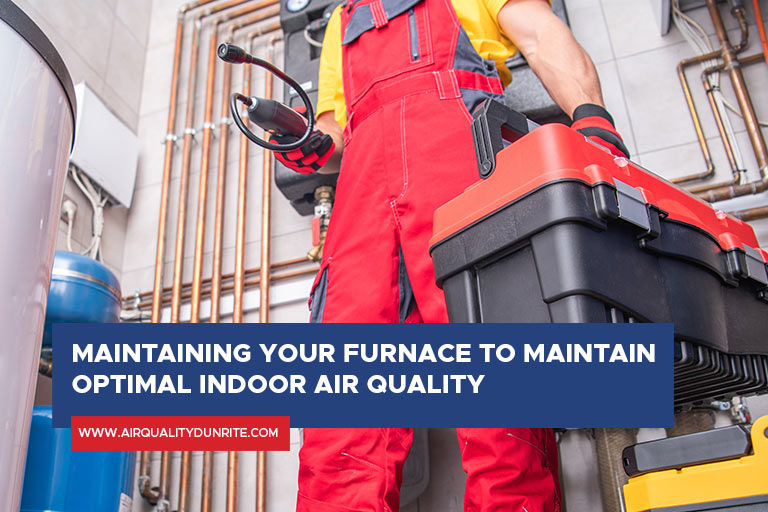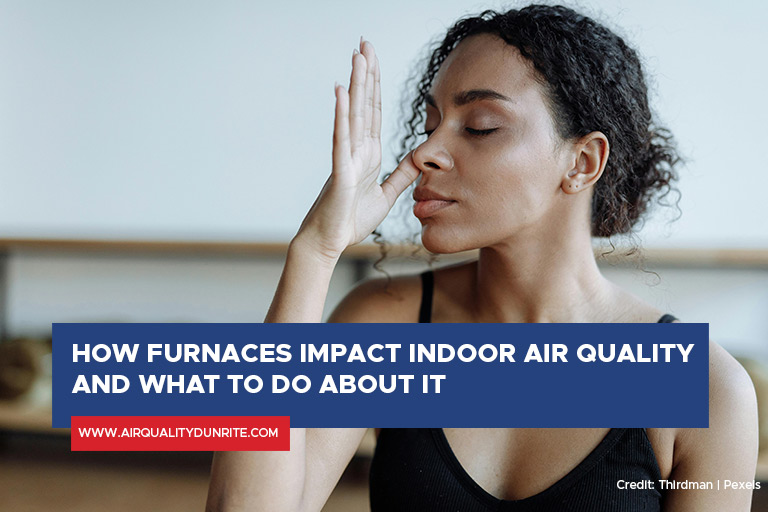Furnaces are essential for keeping homes warm during the cold months, but their operation can significantly affect indoor air quality. While furnaces provide the much-needed warmth, they can also introduce pollutants and particulates into the air we breathe indoors. Understanding the impact of furnaces on indoor air quality is crucial for maintaining a healthy living environment. This article explores how furnaces affect air quality and provides practical solutions to mitigate these effects, ensuring your home remains a safe and comfortable haven.
How Furnaces Impact Indoor Air

Furnaces impact indoor air quality in several significant ways, affecting the health and comfort of occupants. Understanding these impacts is crucial for taking steps to mitigate negative effects and ensure a healthy indoor environment.
-
Combustion By-Products
Traditional furnaces burn fuel, such as natural gas, oil, or propane, to generate heat. This combustion process produces various by-products, including carbon monoxide (CO), nitrogen dioxide (NO2), and sulphur dioxide (SO2). These gases can be harmful to human health, causing respiratory problems, headaches, and even more severe health issues if inhaled in large quantities. Proper venting and maintenance of the furnace are essential to minimize the presence of these gases indoors.
-
Dust and Particulates
Furnaces can distribute dust, pet dander, pollen, and other particulates through a home’s air ducts. This circulation can worsen indoor air quality, particularly for individuals with allergies, asthma, or other respiratory conditions. These particulates can irritate the lungs and exacerbate symptoms of respiratory diseases. Regularly replacing or cleaning furnace filters and ensuring the ductwork is clean can help reduce the amount of particulates circulated by the furnace.
-
Mould and Humidity
The operation of a furnace can affect indoor humidity levels, which in turn can impact mould growth. Too much humidity can encourage mould and mildew to grow, especially in areas where air circulation is poor. On the other hand, furnaces can also dry out the air excessively, leading to dry skin, irritated respiratory tracts, and discomfort. Using humidifiers or dehumidifiers, depending on the situation, can help maintain optimal humidity levels.
-
Volatile Organic Compounds (VOCs)
Furnaces and their components, including filters and ductwork, can emit volatile organic compounds (VOCs). These are a variety of chemicals that can evaporate into the air at room temperature. Exposure to high levels of VOCs can lead to health issues such as eye, nose, and throat irritation, headaches, and in severe cases, damage to the liver, kidney, and central nervous system. Selecting low-emission furnace components and ensuring adequate ventilation can reduce the concentration of VOCs indoors.
-
Airflow and Ventilation Issues
Proper airflow and ventilation are critical for maintaining good indoor air quality. Furnaces that are not correctly balanced or that lack adequate ventilation can lead to stagnant air, concentrating indoor pollutants. Moreover, incorrect airflow can stir up dust and other particulates, making them more likely to be inhaled. Installing a heat pump in the furnace can offer a more energy-efficient way to heat and cool homes while also improving indoor air quality. Heat pumps do not burn fuel to generate heat, thereby reducing the production of combustion by-products.
What to Do About It

Maintaining optimal indoor air quality is essential for the health and well-being of all occupants in a home, especially when a furnace is in use. Various steps can be taken to mitigate the impact of furnaces on indoor air quality, ensuring a healthier living environment. Here are comprehensive strategies to improve indoor air quality:
-
Regular Maintenance and Inspections
The cornerstone of keeping your furnace operating safely and efficiently is regular maintenance and inspections by a qualified technician. This should include checking the furnace for leaks, ensuring that the combustion process is efficient, and verifying that all vents and chimneys are clear and properly venting outdoors. Maintenance also involves cleaning or replacing the furnace filter according to the manufacturer’s recommendations, typically every 1 to 3 months during the heating season. A clean filter not only improves air quality but also enhances the efficiency of your furnace, reducing energy costs.
-
Upgrade Filters
To significantly reduce the amount of dust, allergens, and particulates circulated by your furnace, consider upgrading to high-efficiency particulate air (HEPA) filters or those with a high Minimum Efficiency Reporting Value (MERV) rating. These filters are more effective at trapping small particles and can make a noticeable difference in the cleanliness and quality of your indoor air. Remember, higher efficiency filters may need to be changed more frequently and can restrict airflow, so it’s important to consult with a professional to find the right balance for your system.
-
Install Carbon Monoxide Detectors
Since furnaces can emit harmful gases such as carbon monoxide, installing CO detectors near sleeping areas and on every level of your home is critical. These detectors can provide an early warning of CO buildup, allowing you to take action before it becomes a serious health risk.
-
Use Humidifiers or Dehumidifiers
Balancing indoor humidity is crucial for comfort and health. Too much humidity can promote mould growth, while too little can lead to dry skin and respiratory irritation. Using humidifiers or dehumidifiers, as needed, can help maintain optimal humidity levels, generally between 30% and 50%.
-
Improve Ventilation
Enhancing ventilation is key to reducing indoor pollutant levels. This can involve using exhaust fans in bathrooms and kitchens, opening windows when weather permits, and considering the installation of a mechanical ventilation system such as a Heat Recovery Ventilator (HRV) or Energy Recovery Ventilator (ERV). These systems provide a continuous supply of fresh outdoor air, while expelling stale indoor air, and can significantly improve indoor air quality.
-
Seal and Insulate Ductwork
Leaky ductwork can lead to significant heat loss and can draw in pollutants from unconditioned spaces like attics or crawl spaces. Sealing and insulating ducts can improve the efficiency of your heating system and reduce the risk of contaminant entry, improving indoor air quality.
-
Consider Upgrading Your Furnace
Older furnaces may not be as efficient or clean-burning as newer models. Upgrading to a more efficient furnace can reduce energy use and emissions, improving indoor air quality. Additionally, consider integrating a heat pump for enhanced efficiency and reduced reliance on fossil fuels.
-
Professional Air Quality Assessment
For a comprehensive understanding of your home’s air quality, consider a professional assessment. This can identify specific pollutants and provide targeted recommendations for improvement.
Furnaces play a vital role in maintaining indoor comfort during the colder seasons. However, they can also affect indoor air quality through the introduction of pollutants, particulates, and humidity changes. By understanding these impacts and implementing practical solutions, homeowners can significantly mitigate these effects, ensuring a healthier indoor environment.
For those in Vaughan and Richmond Hill who are experiencing issues with your furnace, Air Quality Dunrite offers expert furnace repair services to ensure your heating system operates efficiently and safely, enhancing your indoor air quality. Don’t let furnace problems compromise your home’s air; contact Air Quality Dunrite at (416) 342-1939 for furnace repair in Vaughan and Richmond Hill.



